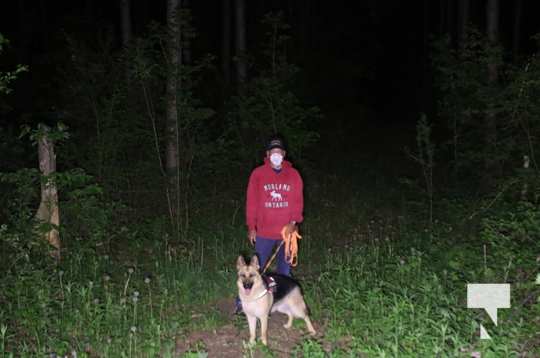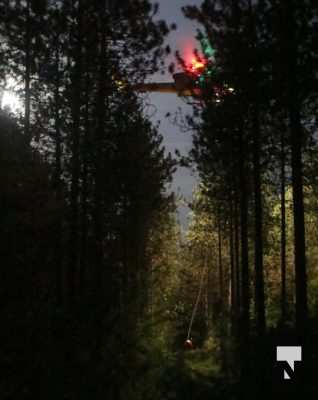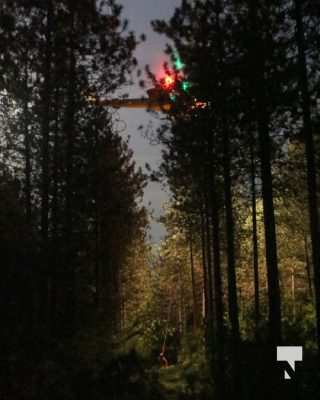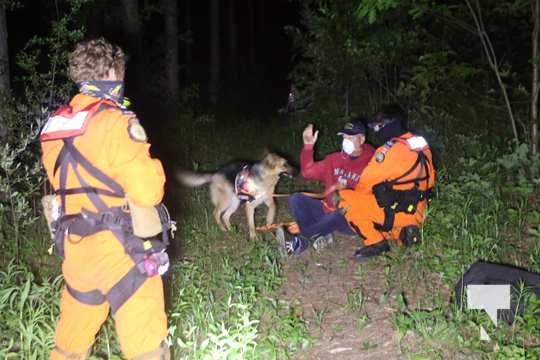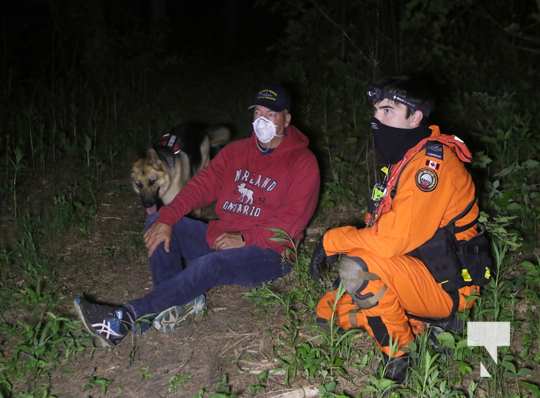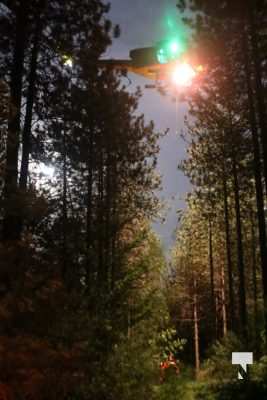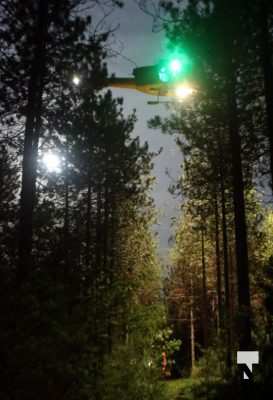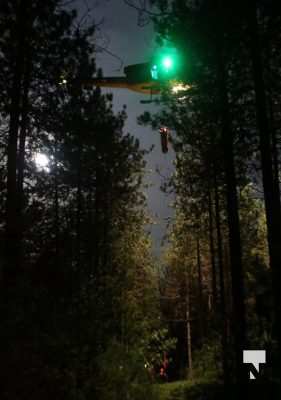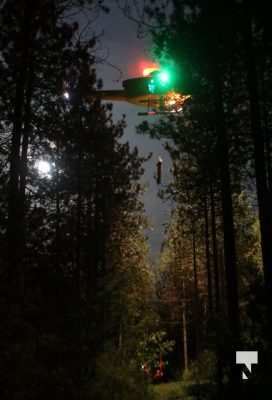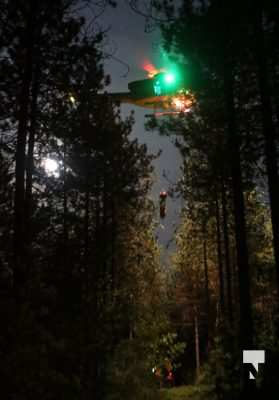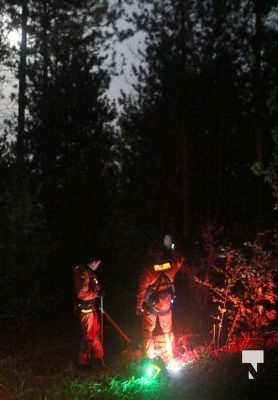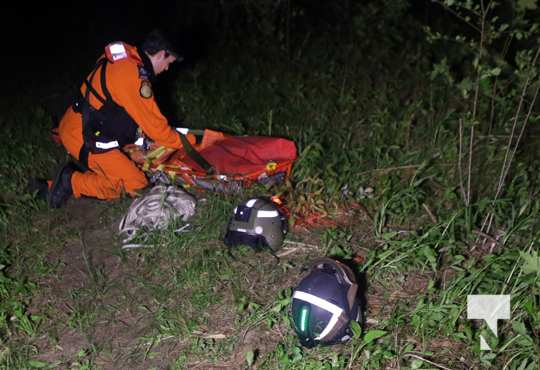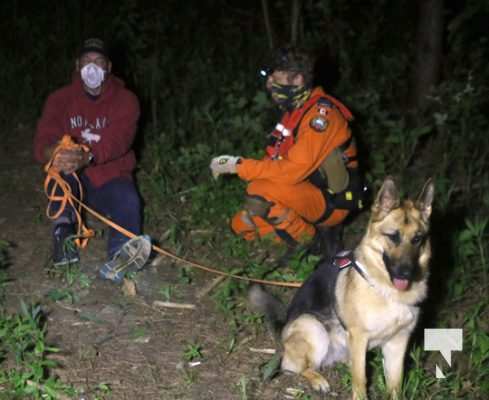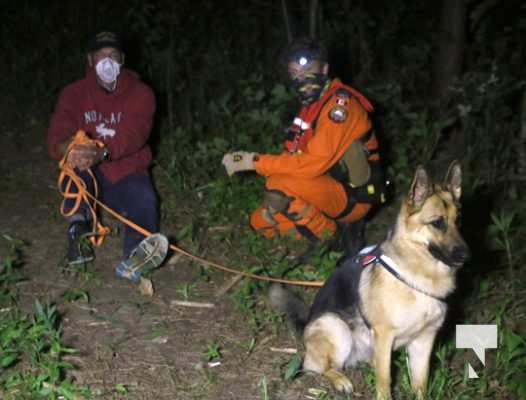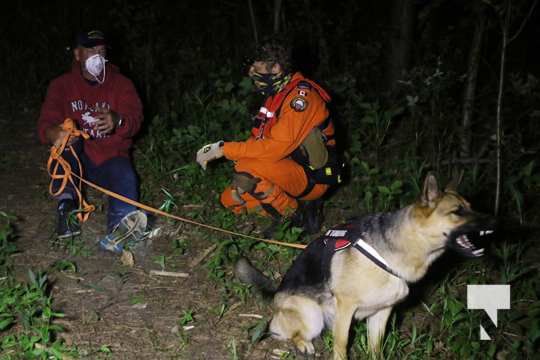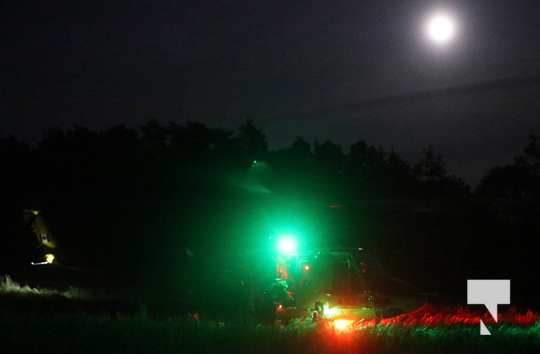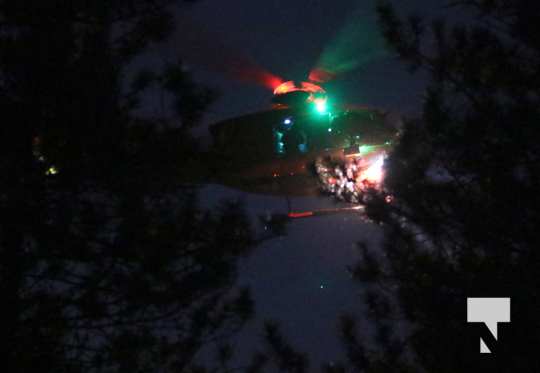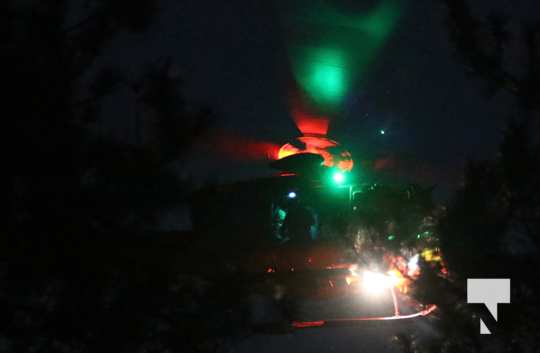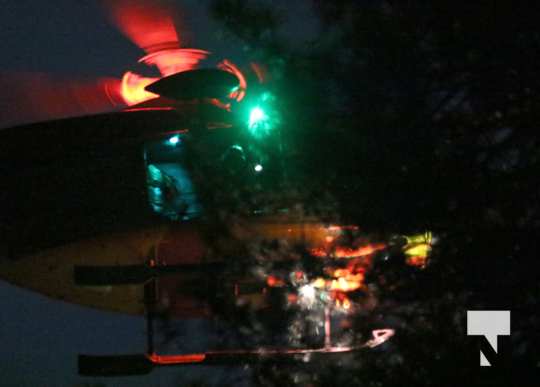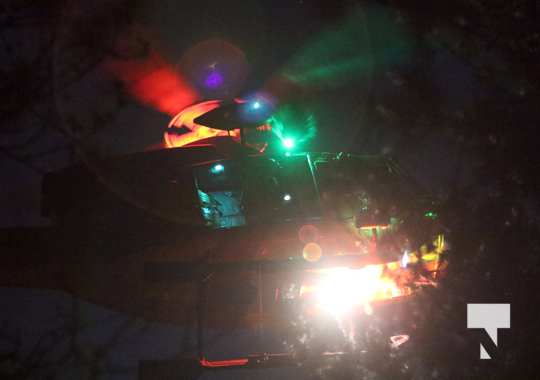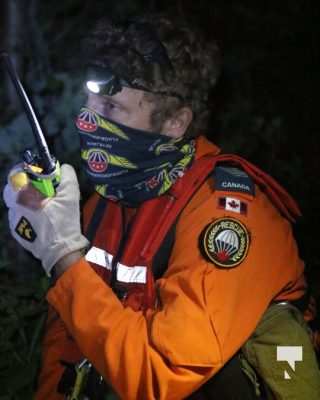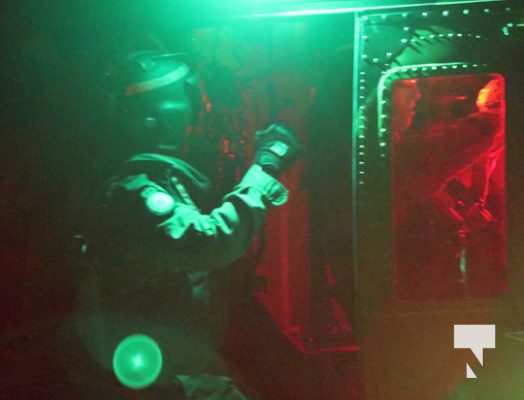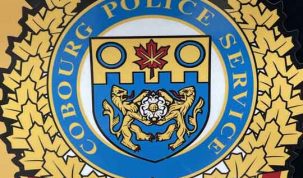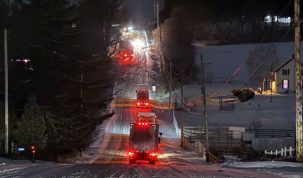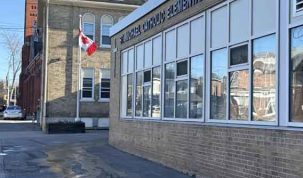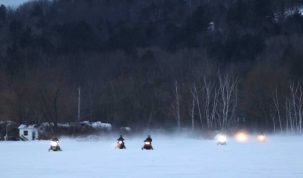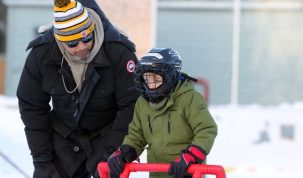Being hurt and lost in the woods is a scary predicament for anyone. But hearing the sounds of a helicopter from 424 Search and Rescue Squadron at CFB Trenton and the blinding light of a searchlight shining down would be a welcome relief.
Thankfully it was all part of the training that took place at the Ganaraska Forest on Thursday, June 4, 2020.
Claude Courcelles is the National CASARA (Civil Air Search and Rescue Association) Liaison Officer and on Thursday evening he played the “victim” as part of the 424 Squadron’s support crew for the training.
The scenario was a injured hiker lost in the Ganaraska Forest with their dog.
In reality, a lost hiker would be OPP jurisdiction. If they required more resources they would call the Joint Rescue Coordination Centre to ask for air support, which would then initiate 424 Squadron.
In this scenario, members of 424 Search and Rescue Squadron at CFB Trenton were dispatched and a response by a helicopter crew along with SARTECS (Search and Rescue Technicians).
SARTECS, like the crew of the helicopter are highly trained for all types of weather conditions and regularly can be seen on Lake Ontario practising with the Canadian Coast Guard.
On this evening, it was a full moon, but the only way to spot the injured person was through night vision goggles.
It’s a full moon, but on the ground because of the dense forest it’s pitch black and you literally couldn’t see a hand in front of your face.
The silence of the night in the forest is disturbed by the distance sound of a helicopter approaching.
But the fear isn’t over yet, as the helicopter crew has to do a grid search of the forest to help spot the individual.
The night vision goggles help for detecting the light source. With a full moon, Caurcelles said it was like daylight to the spotters in the aircraft. But you’re still searching an area of over 11,000 acres in the Ganaraska Forest.
As the sound of the helicopter flies closer, the injured person waves his flashlight hoping it will attract the attention of the crew.
Soon a very powerful spotlight with one million candle power lights up the area indicating the injured party has been spotted.
Next, it’s finding an area to lower two SARTECS to evaluate the condition of the lost person and figure out a way to extract the patient.
Once the SARTECS are lowered to the ground through a narrow space in the trees, during changing times, the first thing they both do is place a mask over the face because of COVID-19.
A rescue basket/stretcher commonly referred to as a stokes basket is carefully lowered to the ground.
As this is a scenario, there was no one actually lifted from the area, but shortly after the SARTECS met up with the helicopter which landed in a nearby field.
The scenario was part of a Squadron Certification flight to become a Search and Rescue Aircraft Commander.


